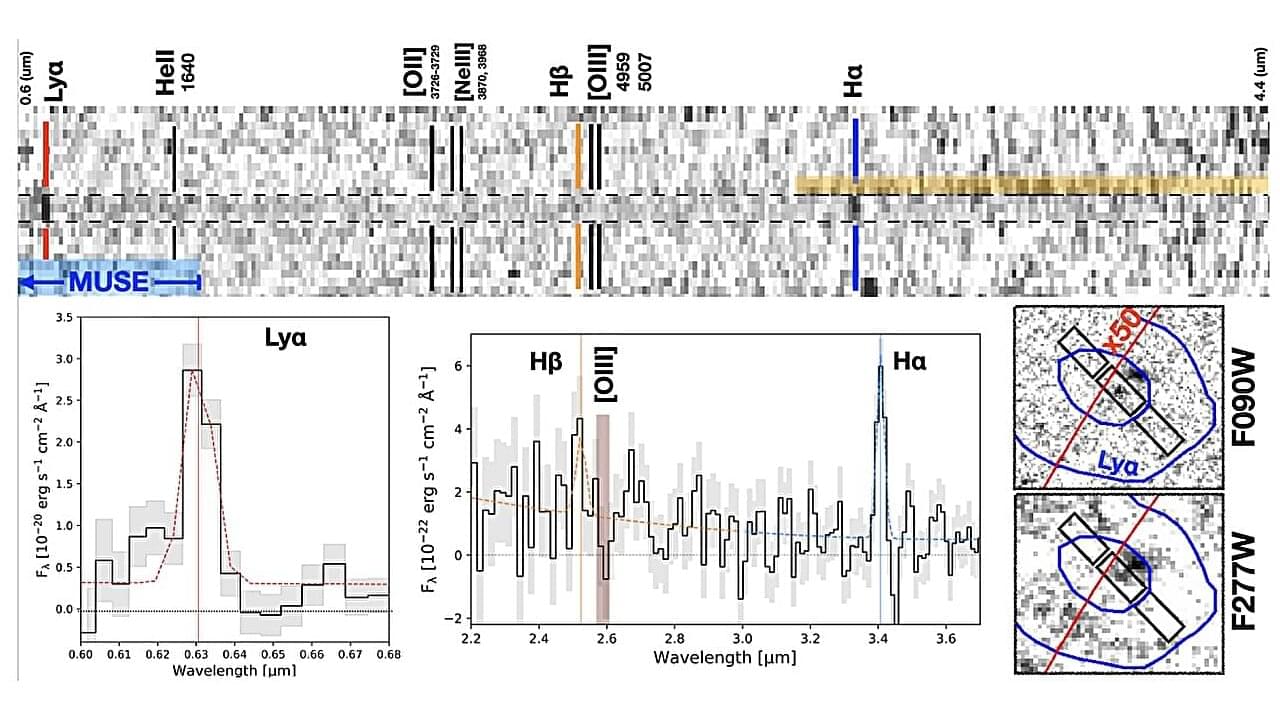Using the James Webb Space Telescope (JWST), astronomers have detected what appears to be a faint and small star-forming complex. The discovery of the new complex, which received the designation LAP2, is detailed in a research paper published Sept. 8 on the arXiv preprint server.
The hypothetical Population III stars, composed almost entirely of primordial gas, are theorized to be the first stars to form after the Big Bang. Finding very low-metallicity, low-mass sources at high-redshifts could be crucial to investigating these stars, as they provide a rare glimpse of galaxies under conditions similar to those of the early universe. This could help us understand, for instance, how the first generations of stars enriched the cosmos with heavier elements.
Recently, a team of astronomers led by Eros Vanzella of the Astrophysics and Space Science Observatory of Bologna, Italy, inspected one such high-redshift, metal-poor and low-mass source. The source was identified behind the galaxy cluster Abell 2,744, which acts as a strong lens.
